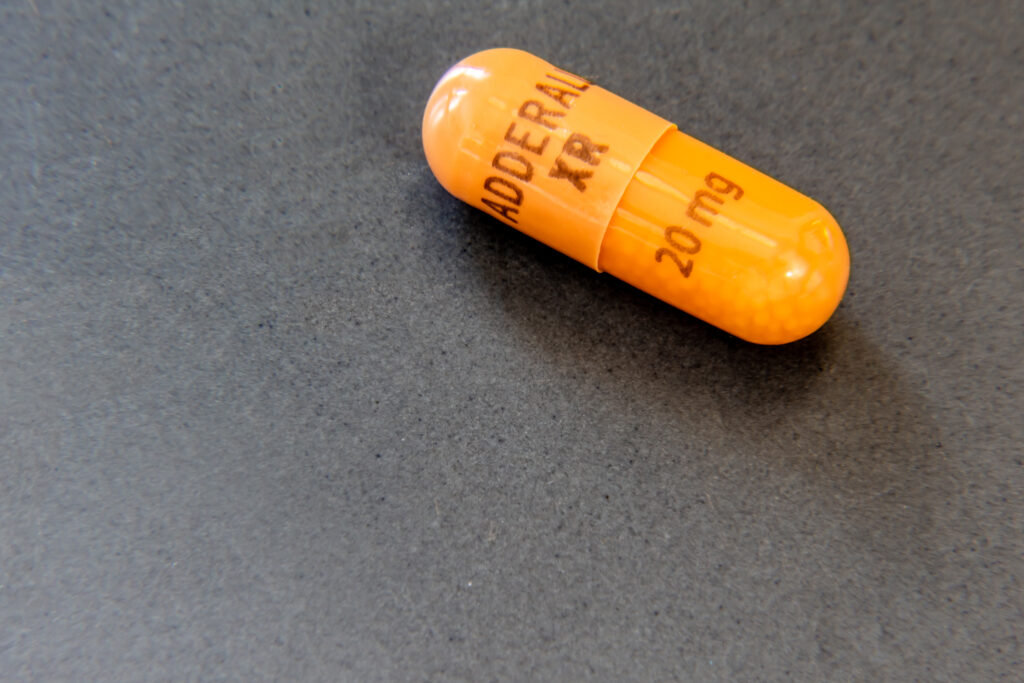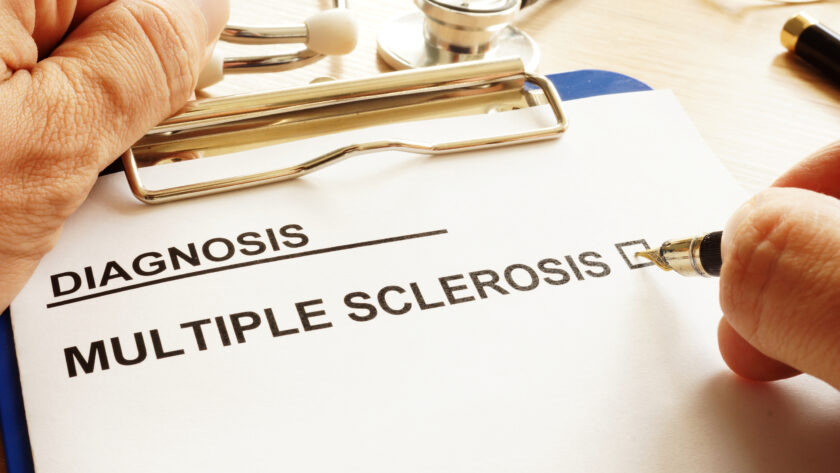Prescription Stimulants and its Effects on Multiple Sclerosis
Introduction
Multiple sclerosis is a neurodegenerative disorder in which the immune system consumes the protective layering around the nerves (Kurtzke, 2005). It is potentially disabling in terms of the brain and central nervous system as it can alter the function of these systems in an adverse way (Rolak, 2003). Unfortunately, the underlying cause(s) of multiple sclerosis are still unknown (Ghasemi et al., 2017). However, it is arguable to suggest that a study on prescription stimulants (such as Adderall, Concerta, Dexedrine, Faclin, Metadate, Methylin, Ritalin, etc.), which are widely known to change central nervous system activity (Moore et al., 2021), could also be a primary contributing risk factor to the development of this crippling disorder.
Variables
In this study, groups are defined as survey participants with a current diagnosis of multiple sclerosis. This Control Group will consist of adult participants aged 18 or older. The dependent variables measured in this study include: 1) participant’s use of prescription stimulants as a child (8-17) for a prolonged period of 5 years or more and 2) the age at which the participant received a diagnosis of multiple sclerosis.
Rationale

Studying a select range of participants with defined, similar characteristics and the effect of stimulant medication on the development of MS, means understanding how the central nervous system and brain chemistry is altered by the drug. It is reasonable to suggest that individuals suffering from MS could have been prescribed prescription stimulants as a child, and furthermore, it is logical to make the jump which is hypothesizing the prescription stimulants could have contributed to the development of MS. Prescription stimulants are well known modifiers of mind chemistry, manipulating the way receptors work in the brain (Anderson, 2005) and changing neurotransmitter pathways (Yanofski, 2011). In fact, existing research reveals that these drugs can be measured in three senses: brain activity, brain chemistry, and physical/emotional behavior (Volkow et al., 2003). To summarize, there are many studies which already outline the various biochemical and behavioral changes found in MS patients (Joy & Johnston, 2001), these changes simply require further investigation.
Hypothesis
It is proposed that the relationship between the development of multiple sclerosis (MS) can be quantified by brain and central nervous system changes caused from the use of prescription stimulants (such as Adderall or the other aforementioned medications) as a child.
Limitations
Some limitations of this study may include MS patients with additional undiagnosed conditions. These types of anomalies could greatly alter the validity of the data. It is also worth mentioning that adolescents typically have different neurobiological responses to substances than adults (Nock et al., 2017). For these reasons, only adults presumed clear of any other disorders or conditions (aside from MS) should be considered in this research. It is imperative that this study harbors non-smoking participants, since nicotine has been proven to contribute to MS diagnoses (O’Gorman & Broadley, 2016). It is also important to exclude any participant surveys which reveal any substance misuse behavior (abusing the substance, selling the substance, or otherwise using the substance other than as directed). And finally, there will be a portion of survey participants who report using the prescribed substance for less than five years, which means a larger sample size of at least 100 participants is required for viable data.
Conceptual Context
Prescription stimulants are one of the most prescribed, controlled substances given to children in their developmental years (Lakhan & Kirchgessner, 2012). This study will attempt to provide insight as to a multiple sclerosis risk factor associated with the early-life use of prescription stimulants. Prescription stimulants work by speeding up the central nervous system and may instigate a premature decline of CNS functions. Like the muscular system, the central nervous system can be overworked (Kreher & Schwartz, 2012). The central nervous system is a depreciable asset in the body, like any other system or organ (Sorond, 2015). As the central nervous system declines, mobility decline typically occurs as well (Sorond, 2015). Amphetamine use has been proven to accelerate some aging (Reece et al., 2017), and aging has been proven to accelerate CNS decline (Sorond, 2015). It is reasonable to suggest that long-term amphetamine use in a child might accelerate their CNS’ biological age, encouraging any MS precursors to prematurely emerge.

Many individuals who are prescribed stimulants as children may not have required the prescription (Hartnett et al., 2004). Incorrect diagnoses could mean a lot of children are taking prescription stimulants they do not need, potentially affecting the integrity of normal neurological function (Weyandt et al., 2018). So many children have been misdiagnosed with ADHD (and subsequently treated with prescription stimulants) that an entire toolkit was created for the diagnosis of ADHD (Haber, 2003). This toolkit included research information, diagnosis pathways, and treatment protocols (such as prescription stimulants) for ADHD diagnoses (2003). Some suggest that medicating ADHD too early has become out of control (O’Connor, 2001).
The effects of prescription stimulants on the normal-functioning brain and central nervous systems can be detrimental (Avois et al., 2006). Some evidence suggests amphetamines cause brain damage, and that the dopaminergic system may be altered (Berman et al., 2009). It is reasonable to suggest this alteration warrants the study of other parts of the brain and neurobiology, including the attributes that create MS (such as the mechanisms that allow the brain communicates with the body).
Overstimulation of the inhibitory nervous system can accelerate the pathogenesis of neuromuscular and neurological conditions, such as multiple sclerosis. The inhibitory nervous system is the process by which the body transmits neuronal signals activated by the effects of neurotransmitters (Obata, 2013). Clinical observations of the inhibitory nervous system suggest that the mechanics of the system may play an important role in the pathogenesis of neurological disorders, such as MS (Tuk, 2016). Prescription stimulants are well-known to modify the inhibitory nervous system and affect inhibitory control (Ilieva et al., 2015). Amphetamines work by activating the sympathetic nervous system (Rebec, 2012). Specifically, they increase the synaptic level of norepinephrine (2012).
Some studies have suggested that smoking may increase the risk of developing MS (O’Gorman & Broadley, 2016). While only around ten percent of adolescents are considered smokers (Hu et al., 2020), the stimulant in cigarettes (nicotine) is arguably comparable in some sense to the amphetamines in prescription stimulants. Nicotine releases epinephrine (Hill & Winder, 1974), while amphetamines release norepinephrine (Rothman et al., 2001). Since some studies show nicotine could cause MS (O’Gorman & Broadley, 2016), it is also reasonable to suggest there should be studies which determine if children are at risk by using prescription amphetamines.
To summarize, while the exact etiological factors that cause multiple sclerosis are still unknown, there is a plethora of relevant data which makes it logical to suggest there is a link between early-life, chronic use of prescription stimulants and multiple sclerosis. Additionally, it is plausible that the inflated rate of ADHD diagnoses could mean more children are being exposed to an unnecessary and potentially debilitating stimulant prescription(s).
Research Design
An anonymous, self-reporting survey will be conducted in a group of participants who have been diagnosed with multiple sclerosis as an adult (18+ years old). The survey will give participants a chance to index their prescription stimulant use as a child. The questionnaire will ask participants if they were prescribed any prescription stimulants long-term (for at least 5 years), and if so, when they began (and stopped, if applicable) using the stimulant. It will also collect their dosage (mg), the frequency the medication was consumed, and whether they received an ADHD diagnosis before being prescribed the stimulant. The group data will be split into two primary categories: those who were prescribed a stimulant as a child for long-term use and those who were not. The group data which reported long term use will be used in the data analysis of this study, while other participant surveys will be discarded.
It is predicted that a notable percentage of study participants diagnosed with multiple sclerosis will have reported adhering to a childhood prescription of stimulants, and that many of these individuals may have been prescribed stimulants as early as eight years of age with prolonged use (at least five years). It could further be suggested that there is an inflated amount of ADHD diagnoses in children, and that many of the participants who respond having used stimulants long-term, were diagnosed with ADHD.
Method
Participants
The study will focus on participants who are adults (18+) and have been diagnosed with Multiple Sclerosis (MS). These patients may be male or female, and from any socio-economic background, so long as they possess the diagnosis of MS. To be clear: the participants will only be considered for the survey if they have received an adult diagnosis of MS, despite any individual demographic attributes (ethnicity, geographical location, gender, etc.). This survey will inquire of these participants their childhood medication regimen, and most importantly, if they have been prescribed Adderall or another prescription stimulant as a child for more than 5 years. The age demographic of 18+ gives this survey a more applicable function in terms of how the research can correlate to stimulants being a precursor to MS. To ensure viable, adequate survey, the participant sample size should be no less than 100 participants.

Although the survey is brief, participants of the survey will be compensated for their time, with a two-hundred-dollar payout. Participants may also earn an additional payout of the same amount by offering their time to complete a follow up survey one year later. The follow up survey will allow researchers to gauge the depth of participants development and condition (MS). Having this additional data could be invaluable in terms of understanding the severity of MS in any participants who had also used prescription stimulants as a child. This survey will also ultimately help researchers better understand how the medication could contribute to the developing symptoms of MS.
Materials
This survey relies upon the same group of participants throughout the two administration periods. The survey should be considered a questionnaire. This questionnaire will outline a MS patient’s childhood medical history, and specifically, whether they were prescribed Adderall or another stimulant. The survey should also outline the dosage of the stimulant prescribed. It should detail a MS patient’s frequency of use, and the time frame of which they were using a prescription stimulant as a child (e.g., were they using the stimulant from age 8 until 17, from 8 until their MS diagnosis, permanently, or another regimen). A copy of the survey issued to participants can be found attached as Appendix A. No apparatuses are used in this survey.
Procedure
Participants will be obtained from various multiple sclerosis support groups, contributing only participants with a bona fide MS diagnosis. It is important that numerous support groups from various regions contribute to the participant pool to ensure that the data is not compromised by geographical or environmental anomalies. This is a correlational study which shall be conducted in a quiet place, where participants can focus on developing accurate answers. The participants will be provided a questionnaire, writing utensil, and desk to respond, for both parts of the survey. Each anonymous participant will be volunteering personal information about their medical history, as well as identifying details. Questions will include prescription medication use history, frequency of use, dosage, age of prescription and ages the medication was consumed. The survey will also cover MS symptom affiliation. The questionnaire will allow participants to rank their affiliation with symptoms on a scale from 1 to 6, with higher scores indicating a higher affinity for the condition or statement. Higher scores will indicate greater suffering from MS, and this portion of the questionnaire will ultimately identify any correlation for those MS patients who have also used a prescription stimulant as a child.
Identifying details for the researcher are required so that the participants can complete a follow up survey (same questions) one year later. This is to gauge how severe the participant’s MS condition has evolved within their life. This second sampling of data could be considered a repeated measures design. This design will give researchers insight into “time versus severity of condition” in those participants who have revealed a history of prescription stimulant use as a child.
References
Andersen, S., (2005). Stimulants and the developing brain. Trends in Pharmacological Sciences, 26(5), 237-243. DOI: https://doi.org/10.1016/j.tips.2005.03.009.
Avois, L., Robinson, N., Saudan, C., Baume, N., Mangin, P., & Saugy, M. (2006). Central nervous system stimulants and sport practice. British journal of sports medicine, 40 Suppl 1(Suppl 1), i16–i20. https://doi.org/10.1136/bjsm.2006.027557
Berman, S., Kuczenski, R., and McCracken, J. (2009). Potential adverse effects of amphetamine treatment on brain and behavior: a review. Mol Psychiatry 14, 123–142. https://doi.org/10.1038/mp.2008.90
Ghasemi, N., Razavi, S., & Nikzad, E. (2017). Multiple Sclerosis: Pathogenesis, Symptoms, Diagnoses and Cell-Based Therapy. Cell journal, 19(1), 1–10. https://doi.org/10.22074/cellj.2016.4867
Haber, J., (2003). ADHD: The Great Misdiagnosis. Rowman & Littlefield. Pp. 23-48. ISBN: 1589790472
Hartnett, D., Nelson, J., and Rinn, A., (2004). Gifted or ADHD? The Possibilities of Misdiagnosis. Roeper Review, 26(2), 73-76. Retrieved from: https://positivedisintegration.com/Hartnett2004.pdf
Hill, P., Wynder, E., (1974). Smoking and cardiovascular disease: Effect of nicotine on the serum epinephrine and corticoids. American Heart Journal, 87(4), 491-496, https://doi.org/10.1016/0002-8703(74)90174-4
Ilieva, I. P., Hook, C. J., & Farah, M. J. (2015). Prescription Stimulants’ Effects on Healthy Inhibitory Control, Working Memory, and Episodic Memory: A Meta-analysis. Journal of cognitive neuroscience, 27(6), 1069–1089. https://doi.org/10.1162/jocn_a_00776
Joy, J., and Johnston, R., (2001). Multiple Sclerosis: Current Status and Strategies for the Future. Multiple Sclerosis. National Academies Press (US). Retrieved from: https://www.ncbi.nlm.nih.gov/books/NBK222386/
Kreher, J. B., & Schwartz, J. B. (2012). Overtraining syndrome: a practical guide. Sports health, 4(2), 128–138. https://doi.org/10.1177/1941738111434406
Kurtzke, J., (2005). Epidemiology and Etiology of Multiiple Sclerosis. Physical Medicine and Rehabilitation Clinics of North America, 16, 327-349, 10.1016/j.pmr.2005.01.013
Lakhan, S. E., & Kirchgessner, A. (2012). Prescription stimulants in individuals with and without attention deficit hyperactivity disorder: misuse, cognitive impact, and adverse effects. Brain and behavior, 2(5), 661–677. https://doi.org/10.1002/brb3.78
Moore, T. J., Wirtz, P. W., Kruszewski, S. P., & Alexander, G. C. (2021). Changes in medical use of central nervous system stimulants among US adults, 2013 and 2018: a cross-sectional study. BMJ open, 11(8), e048528. https://doi.org/10.1136/bmjopen-2020-048528
Nock, N., Minnes, S., and Alberts, J., (2017). Neurobiology of substance use in adolescents and potential therapeutic effects of exercise for prevention and treatment of substance use disorders. Birth Defects Research. DOI: https://doi.org/10.1002/bdr2.1182
Obata K. (2013). Synaptic inhibition and γ-aminobutyric acid in the mammalian central nervous system. Proceedings of the Japan Academy. Series B, Physical and biological sciences, 89(4), 139–156. https://doi.org/10.2183/pjab.89.139
O’Connor, E., (2001). Medicating ADHD: Too much? Too soon? American Psychological Association. 32(11), 50, Retrieved from: https://www.apa.org/monitor/dec01/medicating
O’Gorman, C., Broadley, S., (2016). Smoking increases the risk of progression in multiple sclerosis: A cohort study in Queensland, Australia. Journal of the Neurological Sciences, 370, 219-223, https://doi.org/10.1016/j.jns.2016.09.057
Rebec, G.V. (2012). Cocaine and Amphetamines. In eLS, John Wiley & Sons, Ltd (Ed.). https://doi.org/10.1002/9780470015902.a0000042.pub3
Reece, A. S., Norman, A., & Hulse, G. K. (2017). Acceleration of cardiovascular-biological age by amphetamine exposure is a power function of chronological age. Heart Asia, 9(1), 30–38. https://doi.org/10.1136/heartasia-2016-010832
Rolak L. A. (2003). Multiple sclerosis: it’s not the disease you thought it was. Clinical medicine & research, 1(1), 57–60. https://doi.org/10.3121/cmr.1.1.57
Rothman, R. B., Baumann, M. H., Dersch, C. M., Romero, D. V., Rice, K. C., Carroll, F. I., & Partilla, J. S. (2001). Amphetamine-type central nervous system stimulants release norepinephrine more potently than they release dopamine and serotonin. Synapse (New York, N.Y.), 39(1), 32–41. https://doi.org/10.1002/1098-2396(20010101)39:1<32::AID-SYN5>3.0.CO;2-3
Sorond, F. A., Cruz-Almeida, Y., Clark, D. J., Viswanathan, A., Scherzer, C. R., De Jager, P., Csiszar, A., Laurienti, P. J., Hausdorff, J. M., Chen, W. G., Ferrucci, L., Rosano, C., Studenski, S. A., Black, S. E., & Lipsitz, L. A. (2015). Aging, the Central Nervous System, and Mobility in Older Adults: Neural Mechanisms of Mobility Impairment. The journals of gerontology. Series A, Biological sciences and medical sciences, 70(12), 1526–1532. https://doi.org/10.1093/gerona/glv130
Tuk B. (2016). Overstimulation of the inhibitory nervous system plays a role in the pathogenesis of neuromuscular and neurological diseases: a novel hypothesis. F1000. Research, 5, 1435. https://doi.org/10.12688/f1000research.8774.2
Volkow, N., Fowler, J., Wang, G., (2003). Positron emission tomography and single-photon emission computed tomography in substance abuse research. Seminars in Nuclear Medicine. Volume 33(2). Pp. 114-128. DOI: https://doi.org/10.1053/snuc.2003.127300.
Wyandt, L., White, T., Gudmundsdottir, B., Nitenson, A., Rathkey, E., De Leon, K., Bjorn, S., (2018). Neurocognitive, Autonomic, and Mood Effects of Adderall: A Pilot Study of Healthy College Students. Pharmacy, 6(58), 1-17, doi:10.3390/pharmacy6030058
Yanofski J. (2011). The Dopamine Dilemma-Part II: Could Stimulants Cause Tolerance, Dependence, and Paradoxical Decompensation?. Innovations in clinical neuroscience, 8(1), 47–53. PMID: 21311708




